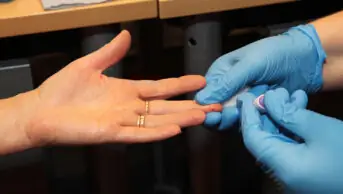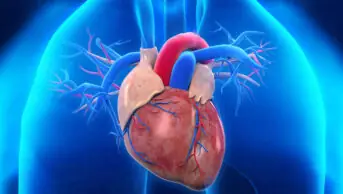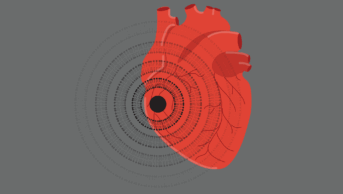
Shutterstock.com
Open access article
The Royal Pharmaceutical Society has made this article free to access in order to help healthcare professionals stay informed about an issue of national importance.
To learn more about coronavirus, please visit: https://www.rpharms.com/resources/pharmacy-guides/wuhan-novel-coronavirus

Source: Shutterstock.com
In March 2020, as the NHS began to respond to the influx of patients with severe and life-threatening respiratory symptoms, the public was willed to “stay at home; protect the NHS; save lives”[1]
. People became accustomed to once unfamiliar terms: social distancing, self-isolation and shielding.
Adhering to the government’s public health messages by staying at home and avoiding all but essential travel has undoubtedly reduced the spread of COVID-19 and the risk of an unmanageable burden being put on the NHS. But there is growing concern that these messages are deterring patients with other conditions from presenting when they need help[2]
.
For example, by mid-April 2020, Cambridge University Hospitals NHS Foundation Trust noted a 40% fall in arrivals to its emergency department, compared with before the virus struck the UK[3]
. Data from Public Health England show that in the first week of April 2020, emergency department attendances across England dropped by 34.5% compared with the same week in 2019; while Public Health Scotland noted a 40.1% reduction during the same period[4]
.
Where are all the patients? While we’re used to hearing about non-urgent attendances troubling A&E departments, in 2018–2019, just 10% of presentations were non-urgent and could have been managed by a GP. This means that this sudden decrease is likely causing a worrying amount of seriously ill patients to stay at home when they should be presenting to the hospital[5]
.
People are not seeking emergency help or going to hospital when they suspect a stroke, possibly due to fear of the virus or not wanting to be a burden on the NHS
Of particular concern are patients with life-threatening cardiovascular symptoms who refrain from seeking help. While no UK data have yet emerged, anecdotally, presentations of cardiovascular symptoms in A&E departments across the UK have fallen, and Deb Lowe, the NHS national clinical director for stroke, is worried that “people are not seeking emergency help or going to hospital when they suspect a stroke, possibly due to fear of the virus or not wanting to be a burden on the NHS”[4]
.
COVID-19 has affected cardiovascular care across Europe
A survey of stroke professional members of the World Stroke Organization suggests a similar picture across the world; all but around 10 of its 100 respondents had seen a “sharp reduction” in the number of acute stroke admissions at their departments[6]
,[7]
.
A survey of 81 interventional cardiology units across Spain — where a lockdown has also been imposed — reported that during the last week of March 2020, centres routinely treating patients with ST-segment elevation myocardial infarction (STEMI) had significantly reduced their assessment and treatment activities[8]
. The number of diagnostic procedures performed by these centres had more than halved (down by 56%); percutaneous coronary interventions (PCIs) fell by 48%, structural interventions by 81%, and PCI in STEMI by 40%[8]
.
Similarly, a retrospective analysis of admissions data for 15 hospitals across northern Italy found that admissions for acute coronary syndrome (ACS) fell by 26–30% during the period between the first confirmed case of COVID-19 in the country (20 February 2020) and the cut-off date for the survey (31 March 2020)[9]
.
Serious implications for those who do not seek help
Patients who do not present with these conditions face grave consequences. Those experiencing an ACS or stroke, for example, must be rapidly assessed and treated[10]
. Those who do not quickly seek emergency help for stroke risk dying, or, at least, severe disability, such as loss of motor control or paralysis. And patients who delay seeking help when having a myocardial infarction tend to have a poorer prognosis, with higher risk of developing complications such as heart failure and serious arrhythmias, and longer hospital stays[10]
.
Neuroscience experts Hugh S Markus and Michael Brainin claim that admissions having “fallen by as much as 50% and even 80%” in centres worldwide suggests that many patients with “moderate and even severe stroke, who could benefit from acute stroke therapies, are not being admitted” — not just those with milder symptoms[6]
,[7]
.
By not tackling cardiovascular problems now, we risk a flurry of more serious cases later
And those with milder symptoms who are not seeking help remain a concern because they could also benefit from acute stroke therapies, early assessment and secondary preventative measures (such as medicines and lifestyle interventions) — the rate of stroke recurring after transient ischaemic attack or minor stroke is around 10% in the first week[6]
.
The sooner the prevention or treatment the better, and by not tackling cardiovascular problems now, we risk a flurry of more serious cases later.
Every contact with a pharmacist counts
These alarming figures show that we pharmacists must encourage people to seek the healthcare they need, pandemic or not. We’re increasingly involved in the medicines optimisation and ongoing management of patients with cardiovascular risk factors, so we must not miss any opportunity to share this message with our at-risk patients[11]
.
During this crisis, community pharmacy teams continue to support patients by providing access to their cardiovascular medicines and health advice. Make every contact count by encouraging and reminding patients that they should seek emergency support when symptoms suggestive of a cardiovascular event occur. Provide patients the opportunity to discuss any concerns or issues that they might have about their medicines, conditions and general health, which may be affected by the pandemic in many ways, such as the economic and mental health effects relating to lockdown. Mental health problems are already thought to be common in people with cardiovascular disease, so mitigating the wider effects of the pandemic will be important to the wellbeing of this group[12]
.
If not already in place, community pharmacy teams should forge new relationships with local primary and secondary care cardiovascular services too. This would allow teams to refer any patients who need support with their medicines to the relevant pharmacy team. It also enables the pharmacy to refer any patients they are concerned about to the relevant cardiovascular team, such as heart failure, cardiac rehabilitation, or cardiology and stroke pharmacy teams.
In general practice and in hospitals where pharmacist-led reviews are taking place — most of which are now being conducted remotely using phone or online meeting technology — there are good opportunities to support patients with long-term conditions and cardiovascular symptoms.
Paying particular attention to black, Asian and minority ethnic patients
We must make sure that we reach all members of our local communities
There is growing concern that COVID-19 is disproportionately affecting the UK’s minority ethnic groups, for reasons currently still being untangled[13]
. This is a group already disproportionately affected by cardiovascular problems. We must make sure that we reach all members of our local communities and pharmacy teams should consider providing targeted support to their high-risk individuals. This support for high-risk black, Asian and minority ethnic groups should continue to curb this striking inequality in health outcomes.
Prevention is better
With our skills and experience we can reduce the likelihood of further health crises emerging as a result of under-diagnosis and under-treatment of cardiovascular disease, which remains the number one cause of death across the world[14]
. By encouraging patients to keep seeking help when they need it, and by doing all we can to support primary and secondary prevention of cardiovascular events, we can prevent even more patients being lost before their time during this pandemic.
Rani Khatib, consultant pharmacist in cardiology and cardiovascular research, medicines management and pharmacy services, Leeds Teaching Hospitals NHS Trust; honorary senior lecturer, Leeds Institute for Cardiovascular and Metabolic Medicine, University of Leeds; co-chair, UK Clinical Pharmacy Association Cardiology Group
References
[1] Department of Health and Social Care. 2020. Available at: https://www.gov.uk/government/publications/coronavirus-covid-19-information-leaflet/coronavirus-stay-at-home-protect-the-nhs-save-lives-web-version (accessed May 2020)
[2] British Medical Association. 2020. Available at: https://www.bma.org.uk/news-and-opinion/thousands-of-doctors-unable-to-offer-patients-the-desperate-care-they-need-as-a-result-of-covid-19-pandemic-bma-survey-finds (accessed May 2020)
[3] Hourston GJM. Int J Surg 2020;78:1–2. doi: 10.1016/j.ijsu.2020.03.082
[4] Thornton J. BMJ 2020;369:m1406. doi: 10.1136/bmj.m1406
[5] NHS Digital. 2019. Available at: https://digital.nhs.uk/data-and-information/data-tools-and-services/data-services/innovative-uses-of-data/demand-on-healthcare/unnecessary-a-and-e-attendances# (accessed May 2020)
[6] Markus HS, Brainin M. Int J Stroke 2020;1747493020923472. doi: 10.1177/1747493020923472
[7] World Stroke Organization. 2020. Available at: https://www.world-stroke.org/news-and-blog/news/the-global-impact-of-covid-19-on-stroke-survey (accessed May 2020)
[8] RodriÌguez-Leor O, Cid-AÌlvarez B, Ojeda S et al. REC Interv Cardiol 2020;2:82−89. doi: 10.24875/RECICE.M20000123
[9] De Filippo O, D’Ascenzo F, Angelini F et al. N Engl J Med 2020 doi: 10.1056/NEJMc2009166
[10] McNair PW, Bilchick KC and Keeley EC.Int J Cardiol Heat Vasc 2019;22:156–159. doi: 10.1016/j.ijcha.2019.02.002
[11] The ICON (Integrating Care Opportunities across the NHS) CVD Secondary Prevention Working Group. 2019. Available at: https://www.pccj.co.uk/browse/editorial/item/5130-a-uk-consensus-on-optimising-cvd-secondary-prevention-care-perspectives-from-multidisciplinary-team-members.html (accessed May 2020)
[12] De Hert M, Detraux J and Vancampfort. Dialogues Clin Neurosci 2018;20(1):31–40. PMID: 29946209
[13] Institute for Fiscal Studies. 2020. Available at: https://www.ifs.org.uk/publications/14827 (accessed May 2020)
[14] World Health Organization. 2019. Available at: https://www.who.int/health-topics/cardiovascular-diseases/#tab=tab_1 (accessed May 2020)


